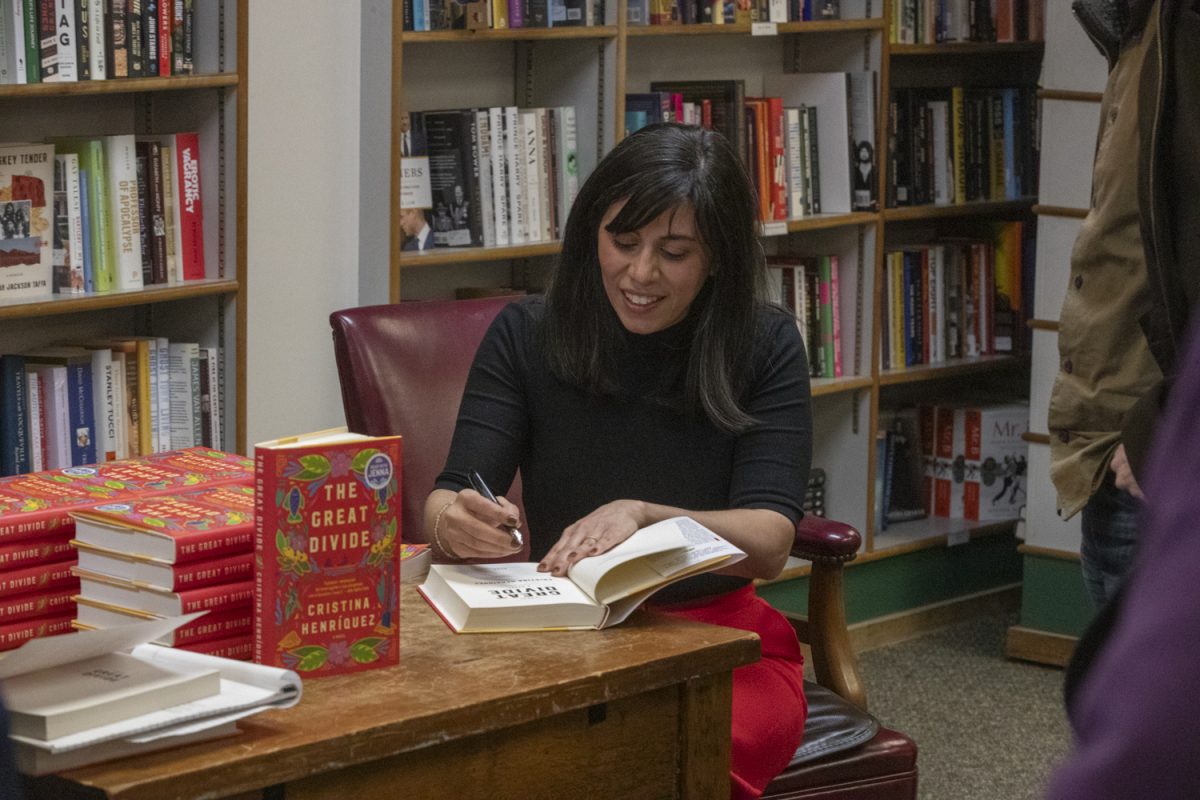Cristina Henríquez is an Iowa Writers’ Workshop graduate who received her undergraduate degree from Northwestern University. She has published works such as “The World in Half,” “Come Together Fall Apart: A Novella and Stories,” “The Book of Unknown Americans,” and her most recent book, “The Great Divide.”
Her nonfiction pieces have been published in The Wall Street Journal, TIME, Real Simple, The New Yorker, The New York Times, and in the anthologies “Hillary: Women Writers Reflect on the Candidate and What her Campaign Meant” and “This Is Not Chick Lit: Original Stories by America’s Best Women Writers.”
Her novel, “The Book of Unknown Americans.” was a New York Times Notable Book of 2014 and one of Amazon’s 10 Best Books of the Year.
This interview has been edited for length and clarity.
The Daily Iowan: The Panama Canal holds many meanings in your book, “The Great Divide.” Why was this important for you to include?
Cristina Henríquez: The creation of the Panama Canal was a monumental moment in the history of the U.S. It was a real turning point; it was about figuring out who was going to control this piece of territory. This was important because it linked the Pacific Ocean and Atlantic Ocean. At the time, the way to power and dominance in the world was through the oceans, through the seas. If people could control the little strip of waterway, that meant that they were going to be the dominant power in the world.
The reason it was important to me was because I grew up going to the Panama Canal, often when I was there visiting my family on summer vacation. It was just one of those things that was so much a part of my childhood, but as I grew older, I started to think, “What is the story of the Panama Canal?”
I had a sense that it was very layered and rich, but I didn’t fully know the story. I started to dig into it and research it, getting inside of it in this different kind of way that I hadn’t seen in novels or movies. I wanted to get beyond what people heard, maybe in a textbook. What was the human side of that story? How did it affect people who were not only working on it but just living through it? What is it like to live through that when the world and the geography of the earth were being transformed?
Why did you decide to write from four different points of view?
There are probably four main points of view and then there are a lot more points of view after that. I didn’t restrain myself from going into a very minor character’s point of view, even if for just one paragraph. This is a story that has been traditionally told in a very one-sided, limited way. It is not only a one-sided story; there were so many people involved, working on it, in proximity to it. So many lives were affected during this monumental undertaking. I just felt like, to do that story justice, I had to bring in as many perspectives as possible so that you could see all the multifaceted angles of it in one book.
What character did you resonate with the most: Francisco, Omar, Ada, or John Oswald, and why?
Omar and Ada were the first characters I thought of. They’ve been with me the longest, so I have a soft spot for them. But Francisco grew on me. His resistance to change, how sad that seemed to me. He was stuck and mired in the past in so many ways and for good reasons, which you see unfold throughout the book. I have affection for all of my characters in different ways. Understanding who John Oswald really was and then giving him a chapter where I think readers see a different side of him and understand him differently. That was important to me. But there are lots of minor characters that I love too, and it was a pleasure to get up every day and spend time with these characters, which sounds kind of weird. But that’s my job — to spend time with imaginary people — so I loved doing this book.
When writing perspective, which do you prefer: Connecting many characters at once like in “The Great Divide” and “The Book of Unknown Americans,” or from one point of view like in “The World In Half”?
I think it depends on the project at hand. You always have to do what serves the book. As I said for “The Great Divide,” it made sense to have this multiplicity of perspectives. For “The Book of Unknown Americans,” there was a mission behind it that had to do with hearing a multitude of voices. You know, it’s equally as pleasurable when I’m just writing a short story and it’s only in first person just for the duration, and I’m sucked into the character’s consciousness. That could be just as satisfying and is always about what serves the story at the end of the piece that you’re trying to write.



